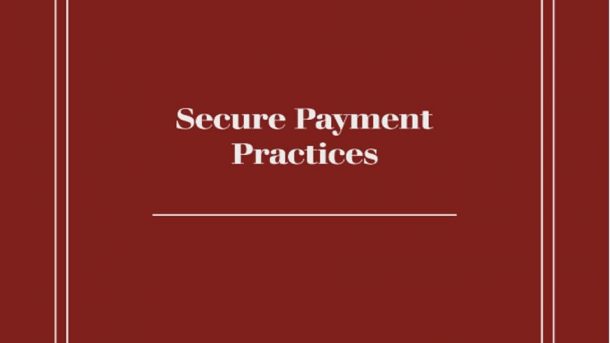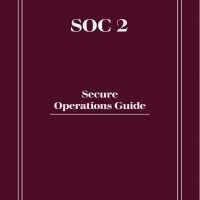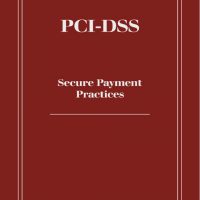Exploring “PCI-DSS Decoded” has been an enlightening journey through the complex landscape of payment card security standards. This book stands out not just as a technical guide but as a comprehensive blueprint for businesses aiming to navigate the rigorous demands of PCI-DSS compliance. It tackles the standard not just as a compliance necessity but as a strategic asset, weaving through its chapters a narrative that brings clarity and actionable insights to a typically dense topic.
The author begins with a compelling preface that sets the tone for the book’s pragmatic approach. By likening digital transactions to the air we breathe—essential and ubiquitous—the author establishes the critical nature of securing such transactions in today’s digital-first economy. This analogy effectively simplifies the importance of PCI-DSS for businesses and individuals alike, making the subsequent detailed exploration of the standards accessible to a broad audience.
As the book progresses, it offers a historical overview of PCI-DSS, providing context that helps demystify why and how the standards were developed. This historical lens is not just educational but also engaging, as it frames PCI-DSS not merely as regulatory requirements but as evolving tools that have adapted to the shifting sands of technology and cyber threats.
One of the most valuable aspects of “PCI-DSS Decoded” is its practical approach to explaining the specific requirements of the standards. The author breaks down each requirement with a clarity that is often missing in other texts on the subject. For example, the discussion on building and maintaining a secure network delves into specific actions businesses can take, such as implementing robust firewall configurations and creating custom password policies. These sections are enriched with real-world scenarios that illustrate common pitfalls and best practices, making the theoretical aspects of PCI-DSS tangible and relatable.
Moreover, the book addresses the challenges and strategies associated with implementing PCI-DSS in the complex ecosystems of modern e-commerce and mobile payments. The exploration of emerging technologies and their impact on payment security is particularly insightful. It provides readers with a forward-looking perspective that is crucial for anticipating future compliance challenges.
“PCI-DSS Decoded” also excels in discussing the cultural shift required within organizations to successfully implement and sustain PCI-DSS compliance. It argues that compliance is not merely a technical or procedural checklist but a continuous cultural commitment. This discussion is crucial, as it elevates the dialogue around PCI-DSS from technical implementation to strategic business integration, advocating for a security-first mindset across all levels of an organization.
In its concluding chapters, the book not only summarizes the key points but also provides a thoughtful reflection on the role of PCI-DSS in the broader context of global commerce and cybersecurity. The appendices, which include a PCI-DSS requirements checklist and a glossary of key terms, are practical tools that enhance the reader’s ability to reference and apply the book’s insights.
“PCI-DSS Decoded” is an indispensable resource for anyone involved in the processing, storage, or transmission of payment card data. Whether you’re a business owner, IT professional, or compliance officer, this book equips you with the knowledge and strategies to not only meet PCI-DSS standards but to embrace them as essential components of your operational and cybersecurity frameworks. The author’s clear, knowledgeable, and engaging writing style turns a complex subject into a manageable and actionable guide, making “PCI-DSS Decoded” a standout publication in the field of payment security.
An Interview with the Author
Interviewer: Thank you for joining us today. Your book, “PCI-DSS Decoded,” has been praised for its clear and practical approach to PCI-DSS. What inspired you to tackle this topic?
Author: Thanks for having me. I was inspired by the challenges many businesses face in understanding and implementing PCI-DSS standards. There’s a lot of confusion and misconceptions about what PCI-DSS compliance entails, which can lead to ineffective security practices or even non-compliance. I wanted to create a resource that not only explains the standards in a straightforward manner but also shows how compliance can be a strategic advantage, not just a regulatory requirement.
Interviewer: In your book, you use several analogies and real-world scenarios to explain complex concepts. How important do you think this method is for your readers?
Author: It’s incredibly important. Cybersecurity, especially something as niche as PCI-DSS, can be daunting. Using analogies and real-world scenarios helps break down these barriers. It makes the information more relatable and easier to understand. When readers can see how the standards apply in real-life situations, they’re more likely to grasp the importance of each requirement and how it impacts their specific context.
Interviewer: One of the standout features of your book is its forward-looking approach, particularly your discussion on emerging technologies. Could you expand on why this is crucial for businesses dealing with PCI-DSS?
Author: Absolutely. The digital payment landscape is constantly evolving, with new technologies like mobile payments, blockchain, and IoT devices changing how transactions are processed. Each of these technologies introduces new security challenges. Businesses need to be proactive, not just reactive, which means understanding how emerging technologies can impact their compliance status. My aim was to provide a guide that not only addresses current standards but also prepares businesses for future challenges and opportunities.
Interviewer: You emphasize the cultural shift required within organizations to sustain PCI-DSS compliance. Can you elaborate on how companies can foster this shift?
Author: Sure, fostering a culture of compliance is about making PCI-DSS a continuous priority, not just an annual checklist. This involves training, regular audits, and a top-down approach where management leads by example. Companies need to integrate PCI-DSS into their everyday business processes and make it part of the organizational ethos. This means encouraging open communication about security, rewarding compliance, and making everyone in the organization a stakeholder in security practices.
Interviewer: Finally, what do you hope readers will take away from “PCI-DSS Decoded”?
Author: I hope readers will come away with a clear understanding that PCI-DSS compliance is achievable and beneficial. I want them to see that with the right approach, compliance can improve their security posture, enhance customer trust, and ultimately, contribute to their business success. More than anything, I hope to demystify PCI-DSS and make it accessible for all types of businesses, helping them navigate the complexities of payment security with confidence.
Dive Into the “Cybersecurity Compliance Navigator” Series
I’m thrilled to share that “PCI-DSS Decoded” is part of the incredible “Cybersecurity Compliance Navigator” series. This collection of guides is a treasure trove for anyone navigating the complex world of cybersecurity regulations. Alongside “PCI-DSS Decoded,” the series includes gems like “SOX Simplified,” “NIST: The CISO’s Compass,” “HIPAA: Healthcare Privacy Strategies,” and “SOC 2: Secure Operations Guide.” Each book in the series tackles a different cornerstone of cybersecurity compliance, providing clear, actionable advice. It’s the perfect toolkit for professionals looking to enhance their understanding of cybersecurity regulations and apply them effectively within their organizations. Whether you’re new to the field or a seasoned expert, these books are designed to help you navigate the ever-changing cybersecurity landscape with confidence.



















